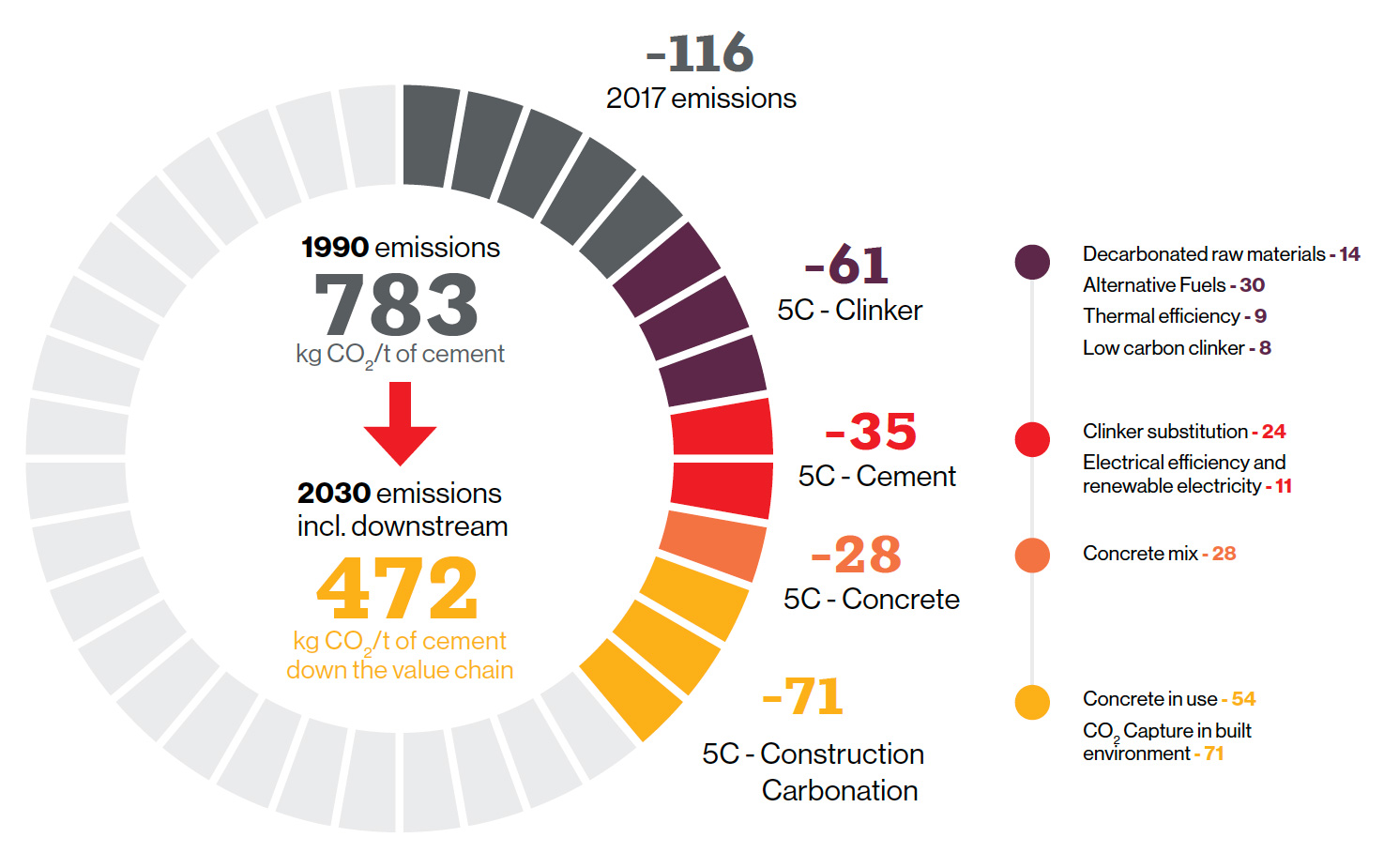Mapping the road
to climate neutrality by 2050
Our approach to 2030 targets the value chain
The path to carbon neutrality by 2050 requires intermediate goal posts. For 2030, CEMBUREAU aspires to be in line with the Paris Agreement’s two degrees Scenario, by reducing its gross CO2 emissions by 30% by 2030 for cement and 40% down the value chain. The CO2 savings in this roadmap are expressed on a gross basis, it is however standard practice in cement to also refer to CO2 savings for alternative waste fuels on a net basis (refer to IEA Roadmap for cement). Here we consider the additional CO2 that would have been emitted by the incineration of these waste fuels if they were not used in the cement process.
The below chart summarises the technical pathways to achieve a 40% gross reduction compared to the 1990 CO2 emissions by 2030 along the cement and concrete value chain. Like for our 2050 objective, this is subject to a policy framework being in place which facilitates these technologies to be implemented and the necessary investment to be made.
CEM BUREAU 2030 roadmap
CO2 reductions along the cement value chain (5Cs: clinker, cement, concrete, construction, (re)carbonation)

CEM BUREAU 2050 roadmap
CO2 reductions along the cement value chain (5Cs: clinker, cement, concrete, construction, (re)carbonation)

Further reductions of CO2 emissions not covered in our roadmap
Thermal mass is the ability of heavyweight materials, such as concrete, to store energy, which is later released. This avoids overheating in buildings and keeps temperatures comfortable. Similarly, it is a material of choice for the renewable energy equipment or mass transit transport. These savings are not accounted for in the present roadmap, which focuses only on reducing emissions from our sector.
Next steps
CEMBUREAU will present and discuss this roadmap with a variety of stakeholders, from policy-makers to the entire construction sector and civil society.
We also intend to periodically review the progress made in reducing emissions where monitoring is, in certain cases, already possible (e.g. 46% alternative fuel use in cement kilns avoids 18 million tonnes of CO2 eq. emission annually and this can be
monitored as the alternative fuel use rate increases) and, in other cases, will need to be further defined in studies and analysis (e.g. CO2 performance of buildings or less concrete use in modern construction). As this is an evolving document, we will also track progress made in developing policies to support these objectives.
